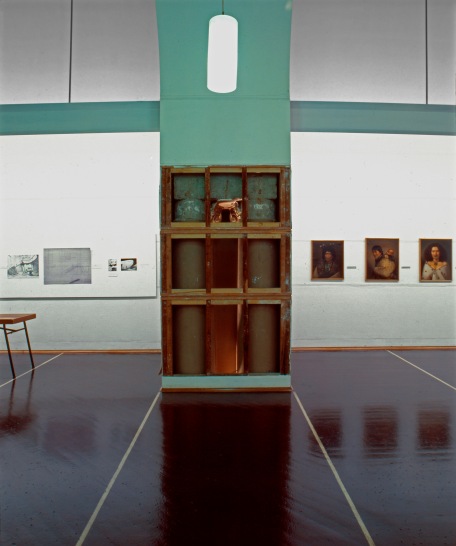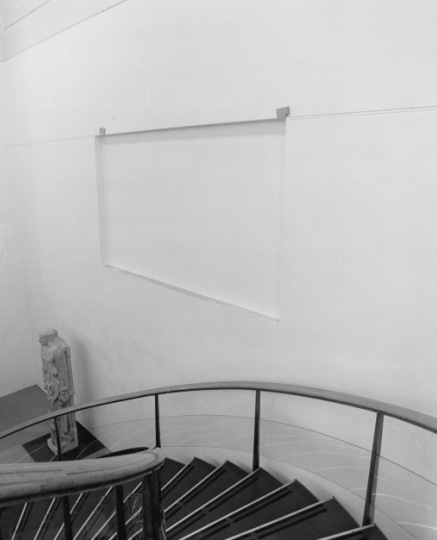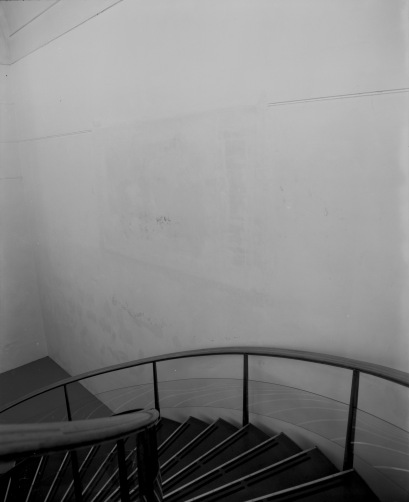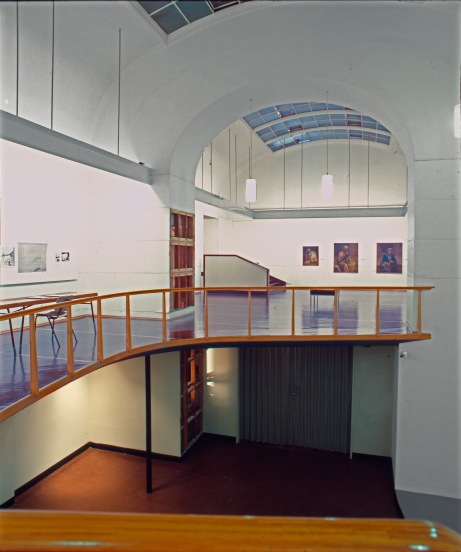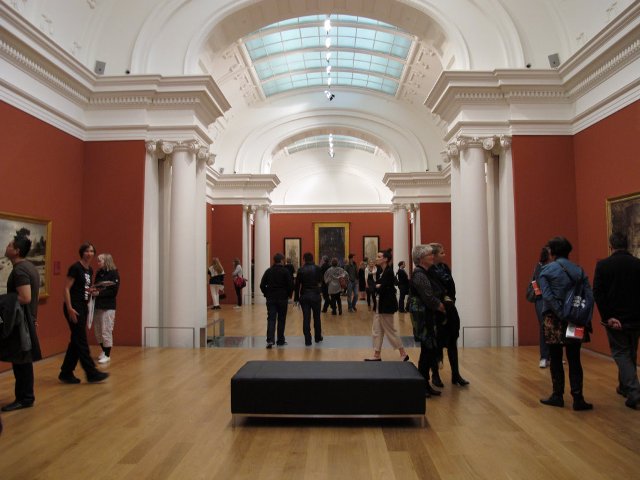Tuesday 22 November 2011
Anna Parlane
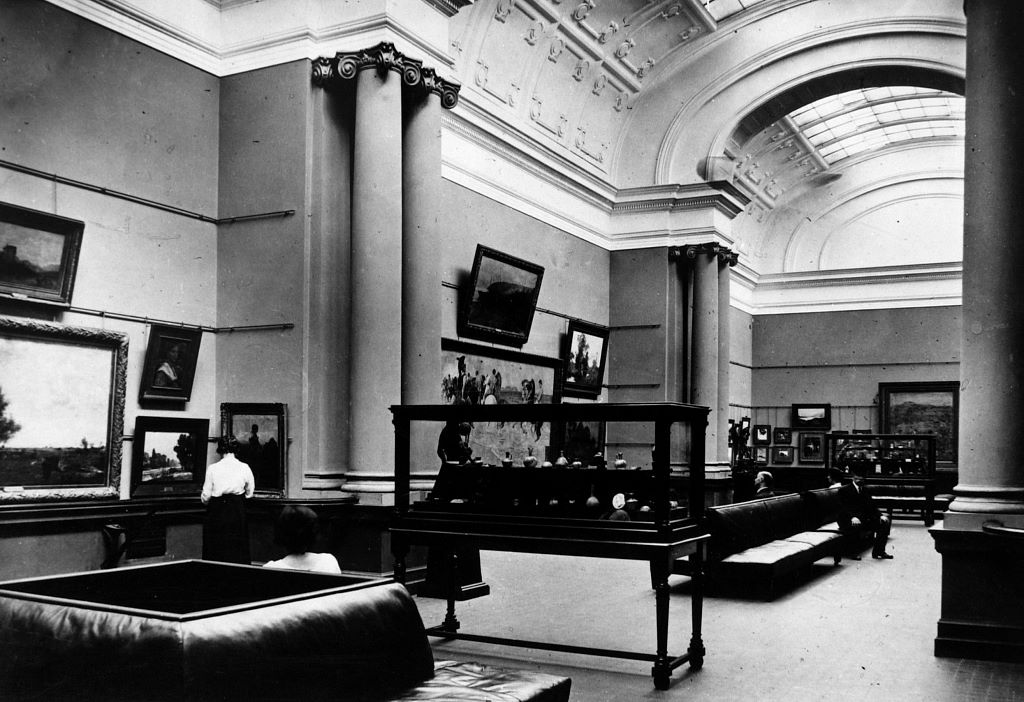
New Gallery [now Mackelvie Gallery], c1916
One of the highlights of the developed Gallery building is the Mackelvie Gallery, which has been painstakingly returned to its former glory as a Victorian neo-classical picture gallery. The interior of this 1916 room was removed in successive renovations in the 1950s and the 1980s. The last time its decorative columns saw the light of day was in 1979 when Billy Apple temporarily exposed them as part of an artwork titled Revealed/Concealed.
Apple is best known for his self-branding, for his witty and conceptual Pop worksand for his sly investigations into the workings of the art market. In 1975, and again in 1979 he turned a critical eye on New Zealand’s art galleries, touring around the country creating works which explored the ideology and politics of art exhibition spaces – the behind-the-scenes mechanics of an art gallery.

Mezzanine Gallery [now Mackelvie Gallery] 1956
At Auckland Art Gallery in 1979, Revealed/Concealed literally exposed the architectural history of the gallery, as Apple cut away the walls of the room to show the 1916 columns which were hidden inside. During the ‘modernisation’ of the Mackelvie Gallery under director Eric Westbrook in 1952, the columns had been walled over to create a sleeker, cleaner and more modern look. By 1979, no-one remembered what they looked like – as Wystan Curnow has recorded, when Apple’s project was being discussed, wild speculation about beautiful orange marble columns began to circulate around the Gallery. When the walls were cut away and the columns were finally revealed, they turned out to be rather less spectacular concrete.

